
The Percolozoa are a group of colourless, non-photosynthetic Excavata, including many that can transform between amoeboid, flagellate, and cyst stages.

Trypanosomatida is a group of kinetoplastid unicellular organisms distinguished by having only a single flagellum. The name is derived from the Greek trypano (borer) and soma (body) because of the corkscrew-like motion of some trypanosomatid species. All members are exclusively parasitic, found primarily in insects. A few genera have life-cycles involving a secondary host, which may be a vertebrate, invertebrate or plant. These include several species that cause major diseases in humans. Some trypanosomatida are intracellular parasites, with the important exception of Trypanosoma brucei.

Anseriformes is an order of birds also known as waterfowl that comprises about 180 living species of birds in three families: Anhimidae, Anseranatidae, and Anatidae, the largest family, which includes over 170 species of waterfowl, among them the ducks, geese, and swans. Most modern species in the order are highly adapted for an aquatic existence at the water surface. With the exception of screamers, males have penises, a trait that has been lost in the Neoaves. Due to their aquatic nature, most species are web-footed.

François-Louis Nompar de Caumont Laporte, comte de Castelnau was a French naturalist, also known as François Laporte or Francis de Castelnau. The standard author abbreviation Castelnau is used to indicate him when citing a botanical name and zoological names other than insects. Laporte is typically used when citing an insect name, or Laporte de Castelnau.
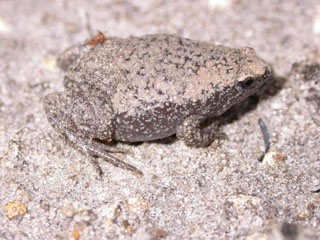
The Microhylidae, commonly known as narrow-mouthed frogs, are a geographically widespread family of frogs. The 683 species are in 57 genera and 11 subfamilies.
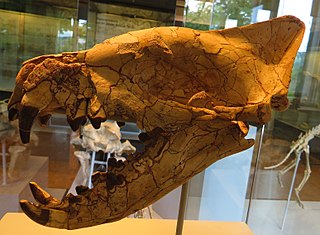
Hyaenodontidae is an extinct family of placental mammals from extinct superfamily Hyaenodontoidea within extinct order Hyaenodonta. Hyaenodontids arose during the early Eocene and persisted well into the early Miocene. Fossils of this group have been found in Asia, North America and Europe.

Henry John Elwes, FRS was a British botanist, entomologist, author, lepidopterist, collector and traveller who became renowned for collecting specimens of lilies during trips to the Himalaya and Korea. He was one of the first group of 60 people to receive the Victoria Medal of the Royal Horticultural Society in 1897. Author of Monograph of the Genus Lilium (1880), and The Trees of Great Britain & Ireland (1906–1913) with Augustine Henry, as well as numerous articles, he left a collection of 30,000 butterfly specimens to the Natural History Museum, including 11,370 specimens of Palaearctic butterflies.

The Polyceridae are a taxonomic family of sea slugs, dorid nudibranchs, marine gastropod mollusks within the superfamily Polyceroidea.

Planorbidae, common name the ramshorn snails or ram's horn snails, is a family of air-breathing freshwater snails, aquatic pulmonate gastropod molluscs. Unlike most molluscs, the blood of ram's horn snails contains iron-based hemoglobin instead of copper-based hemocyanin. As a result, planorbids are able to breathe oxygen more efficiently than other molluscs. The presence of hemoglobin gives the body a reddish colour. This is especially apparent in albino animals.
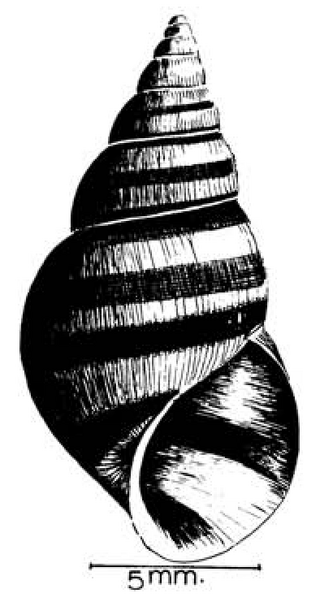
Paludomidae, common name paludomids, is a family of freshwater snails, gastropod molluscs in the clade Sorbeoconcha.
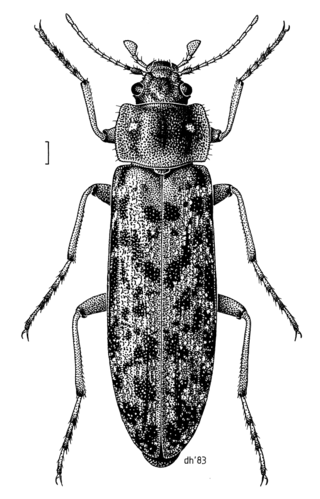
The Chalcodryidae are a family of beetles in the superfamily Tenebrionoidea. It contains at least five species in two genera Chalcodrya and Philpottia, which are endemic to New Zealand. They are generally found associated with moss or lichen covered branches, with the larvae having been found to be associated with dead twigs. They are likely noctural, feeding on lichen and other plant material at night. The genera Sirrhas and Onysius, formerly placed in this family, have subsequently been transferred to Promecheilidae.
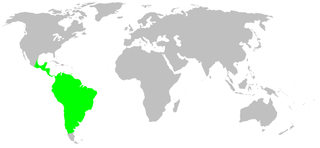
Senoculus is a genus of araneomorph spiders in the family Senoculidae, and was first described by Władysław Taczanowski in 1872. It is the only genus in the family Senoculidae.

Carlo Luigi Spegazzini, in Spanish Carlos Luis Spegazzini, was an Italian-born Argentinian botanist and mycologist.

Iroko is a large hardwood tree from the west coast of tropical Africa that can live up to 500 years. This is the common name for the genus Milicia, in which there are two recognized species, which are closely related: Milicia excelsa and Milicia regia.

Rosa 'de Rescht' is a Portland Damask rose introduced by English gardener Nancy Lindsay in 1945. In the first part of her book The Genus Rosa, Ellen Willmott described a rose that is known by the Gilaks as "Gul e Reschti", which is probably the same as Rose de Rescht.
Alaimus primitivus is a species of nematode belonging to the family Alaimidae.
Alaimidae is a family of nematodes belonging to the order Dorylaimida.














